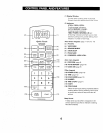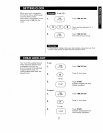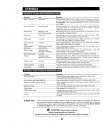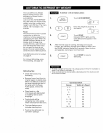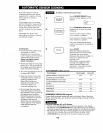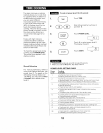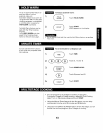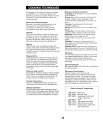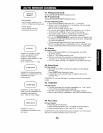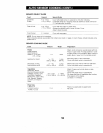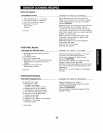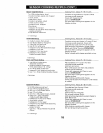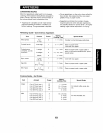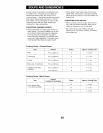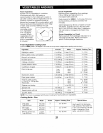
Advantages of microwave cooking are speed
and efficiency. For warming, heating, and
defrosting, nothing compares. There are a few
tips that will make microwaving easier and
more enjoyable.
Microwave Cooking Principles
Because microwave cooking requires only
one-quarter to one-third the time of
conventional cooking, the same cooking
principles become even more important.
Quantity
The more food being cooked, the longer you
will have to cook it. As a general rule, when
doubling a recipe, increase the cooking time
by about 50 percent. When cutting a recipe in
half, reduce the time by about 40 percent.
Density
Dense foods, such as potatoes, roasts and
carrots, absorb microwave energy less quickly
than porous foods such as ground beef or
mashed potatoes. Therefore, denser foods take
longer to cook.
Shape and Size
Small pieces cook faster than large ones. For
even cooking, it is important to have all the
pieces the same size. Evenly shaped pieces,
round or doughnut shaped, microwave best.
When cooking items of varying thickness,
arrange the thick portion near the outer edge
of the dish.
Moisture, Sugar and Fat
Food high in moisture, sugar or fat cook faster
than foods that are low in these substances.
Add a minimum of liquid to moist foods. An
excess amount of water slows cooking.
Starting Temperature
Frozen or refrigerated foods take longer to
microwave than food at room temperature.
Delicate Ingredients
Some foods require special attention when
cooked in the microwave oven. Delicate foods
"such as eggs, cheese, mayonnaise, etc. cook
so quickly, they should be watched carefully.
Microwave Cooking Techniques
Arranging: Arrange foods in a circular pattern,
when possible.
Piercing: Pierce the membrane of foods such
as eggs, oysters, snails, sausages, livers,
clams and whole vegetables, so they do not
burst.
Covering: Covering speeds heating and
prevents spattering.
Stirring:To help food cook more quickly and
evenly.
Turning Over: To help larger foods such as
roasts or whole chickens cook more evenly.
Reheating: Place food that is denser/larger/
thicker to the outer edge and the
smaller/thinner or more porous food to the
center.
Shielding: To prevent overcooking, thin or
bony areas can be protected with small strips
of aluminum foil.
Standing Time: Foods continue cooking even
after removal from the oven. Standing time is
necessary to allow foods to complete cooking.
Defrosting
The microwave's ability to defrost is one of its
most appreciated features. Many of the same
principles and techniques that apply to
microwave cooking also apply to microwave
defrosting.
Converting Recipes
Microwave recipes will likely call for less liquid
and cooking time.
Microwave Thermometers
For best results, a microwave-safe
thermometer can be carefully and properly
inserted into the food. The guide to internal
temperatures gives suggested thermometer
readings for meat and poultry. Keep in mind
that standing time is essential for most food to
reach its proper serving temperature.
Guide to Internal Temperatures
130°F (54%).
140°F (60%).
150°1:(66%).
155°1:(68%).
160°F (71%).
165°1:(74%).
170°F (77%).
Rare beef
Medium beef
Vegetables, hot drinks,
soups, casseroles
Veal
Fish steaks and fillets
Well done lamb, pork
Poultry parts, whole fish,
Well done beef
14



